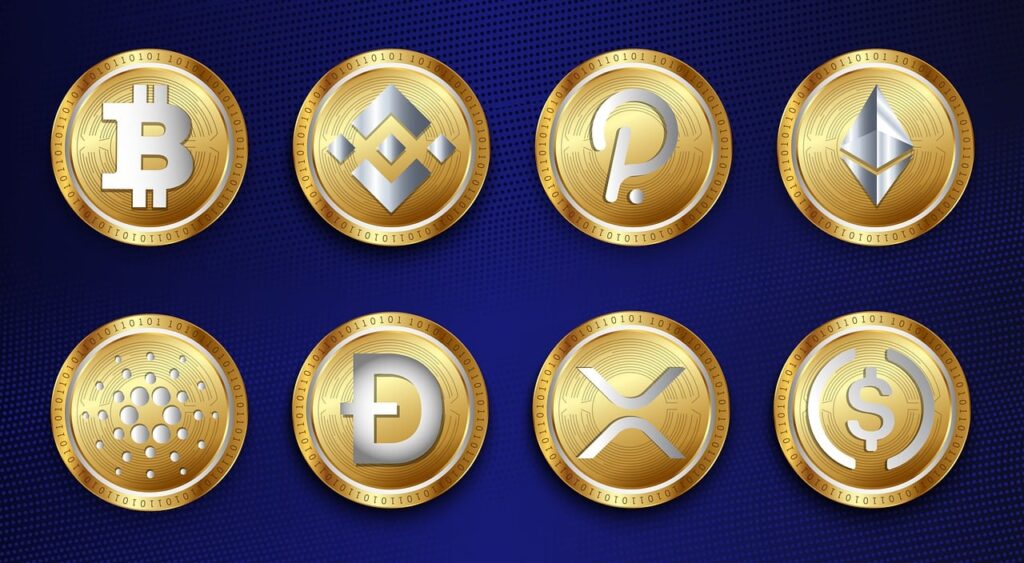Key Points:
- U.S. SEC Eases Cryptocurrency Custody Regulations: Opening doors for more institutional investors.
- Nasdaq Takes a Step Forward with Bitcoin ETFs: Moving towards physical redemption, enhancing investor appeal.
- Investigation Unveils Hidden Aspects of the Trump Couple’s Meme Coins: Highlighting transparency and market integrity.
- Emerging Trends and Innovations: Incorporating recent developments to provide a comprehensive overview.
- Challenges and Future Prospects: Addressing ongoing issues and envisioning the future landscape of cryptocurrency.
U.S. SEC Eases Cryptocurrency Custody Regulations: A Breath of Fresh Air for the Industry
The U.S. Securities and Exchange Commission (SEC) has recently signaled a shift in its regulatory stance by easing the stringent regulations governing cryptocurrency custodians. Traditionally, cryptocurrency custodians operated under a tight regulatory framework aimed at ensuring security and compliance. However, the latest regulatory relaxation is poised to lower entry barriers, making it easier for institutional investors to participate in the cryptocurrency market.
Impact on Institutional Investment
Institutional investors have long been cautious about entering the cryptocurrency space due to regulatory uncertainties and the complexities associated with securely storing digital assets. With the SEC’s decision to relax custody regulations, these investors now have a clearer and more favorable pathway to engage with cryptocurrencies. This move is expected to lead to increased capital inflows into the market, fostering greater liquidity and stability.
Enhancing Security and Compliance
Despite the relaxation, the SEC emphasizes that security and compliance remain paramount. Cryptocurrency custodians are still required to adhere to robust security protocols to protect digital assets from cyber threats and fraud. This balance between regulatory ease and stringent security measures aims to build trust among investors, ensuring that the market remains resilient against potential risks.
Market Growth and Innovation
The easing of custody regulations is anticipated to spur innovation within the cryptocurrency sector. As more institutional players enter the market, there is likely to be an uptick in the development of advanced financial products and services tailored to meet the needs of these investors. This could include the creation of new investment vehicles, enhanced trading platforms, and sophisticated risk management tools, all contributing to the maturation of the cryptocurrency ecosystem.
Nasdaq Takes a Step Forward with Bitcoin ETFs: Advancing Towards Physical Redemption
Nasdaq, one of the world’s leading stock exchanges, has recently submitted an application to modify its Bitcoin Exchange-Traded Fund (ETF) regulations. This modification aims to allow for physical redemption, meaning that the ETF would be backed by actual Bitcoin holdings rather than derivatives or other financial instruments.

Implications for Bitcoin ETFs
The introduction of physical redemption for Bitcoin ETFs represents a significant advancement in the financialization of Bitcoin. By backing ETFs with real Bitcoin, investors gain greater assurance of the underlying asset’s authenticity and value. This move is likely to attract a broader range of investors, including those who prefer tangible asset-backed securities over derivative-based products.
Boosting Investor Confidence
Physical redemption mechanisms enhance transparency and reduce the risk of discrepancies between the ETF’s market price and the actual value of Bitcoin. This alignment between the ETF and its underlying asset can bolster investor confidence, making Bitcoin ETFs a more appealing option for both retail and institutional investors.
Market Acceptance and Integration
Nasdaq’s initiative reflects a growing acceptance of Bitcoin within mainstream financial markets. As major exchanges like Nasdaq embrace Bitcoin ETFs, the cryptocurrency gains further legitimacy as a recognized and tradable asset class. This integration is a critical step towards bridging the gap between traditional finance and the burgeoning world of digital assets.
Future Prospects and Developments
Looking ahead, the approval and successful implementation of physically redeemed Bitcoin ETFs could pave the way for similar products based on other cryptocurrencies. This trend would not only diversify investment options but also contribute to the overall diversification and resilience of investment portfolios.
Investigation Unveils Hidden Aspects of the Trump Couple’s Meme Coins: Shedding Light on Transparency and Integrity
Chainalysis, a prominent blockchain analysis firm, has conducted an in-depth investigation into meme coins associated with the Trump couple. The findings have unveiled several concerning practices, including price manipulation and unauthorized fund transfers, raising questions about the transparency and integrity of certain segments within the meme coin market.
Findings of the Investigation
The investigation revealed instances where the value of the Trump-related meme coins appeared to be artificially inflated through coordinated trading activities. Additionally, there were indications of funds being redirected without proper authorization, suggesting potential fraudulent activities. These revelations underscore the vulnerabilities that can exist within the rapidly evolving and often less-regulated segments of the cryptocurrency market.
Impact on Market Transparency
Chainalysis’s findings highlight the critical need for enhanced transparency and regulatory oversight in the meme coin sector. As meme coins continue to gain popularity, ensuring that these digital assets operate within a framework that promotes honesty and fairness is essential for maintaining investor trust and market stability.
Protecting Investors
The exposure of fraudulent activities within the meme coin market serves as a wake-up call for investors. It emphasizes the importance of due diligence and cautious investment strategies, particularly in markets that are susceptible to manipulation and speculative bubbles. Regulatory bodies may also take note, potentially leading to stricter oversight and protective measures for investors.
Strengthening Market Integrity
In response to such investigations, there is an opportunity for the cryptocurrency community to strengthen market integrity by adopting best practices in governance, transparency, and security. Initiatives that promote ethical behavior and accountability can help mitigate risks and foster a more reliable and trustworthy market environment.
Emerging Trends and Innovations: Staying Ahead in the Dynamic Cryptocurrency Landscape
Beyond the immediate developments highlighted above, the cryptocurrency market continues to evolve with several emerging trends and innovations shaping its future trajectory. Staying informed about these trends is crucial for investors and stakeholders looking to navigate the complex and dynamic landscape of digital assets.
Decentralized Finance (DeFi) Expansion
Decentralized Finance, or DeFi, remains a dominant force in the cryptocurrency space. Innovations in DeFi are leading to the creation of decentralized lending platforms, yield farming opportunities, and automated market makers (AMMs). These developments are democratizing access to financial services, allowing individuals to engage in lending, borrowing, and trading without traditional intermediaries.
Non-Fungible Tokens (NFTs) Integration
NFTs continue to expand beyond digital art and collectibles, finding applications in areas such as gaming, real estate, and intellectual property. The integration of NFTs with other blockchain technologies is enabling new forms of asset ownership and monetization, driving further adoption and investment in the cryptocurrency ecosystem.
Blockchain Interoperability Solutions
Interoperability between different blockchain networks is becoming increasingly important. Solutions that facilitate seamless communication and transactions across various blockchains are being developed, enhancing the overall functionality and scalability of the cryptocurrency infrastructure. This interoperability is critical for fostering a more interconnected and efficient digital economy.
Sustainable and Green Cryptocurrencies
With growing concerns about the environmental impact of cryptocurrency mining, there is a notable shift towards sustainable and energy-efficient blockchain solutions. Green cryptocurrencies and eco-friendly mining practices are gaining traction, appealing to environmentally conscious investors and aligning with global sustainability goals.
Central Bank Digital Currencies (CBDCs) Development
Central banks worldwide are exploring the development and implementation of Central Bank Digital Currencies (CBDCs). These digital currencies aim to combine the benefits of cryptocurrencies with the stability and trust associated with traditional fiat currencies. The rollout of CBDCs could significantly influence the broader cryptocurrency market, potentially leading to increased adoption and integration with existing financial systems.
Challenges and Future Prospects: Overcoming Hurdles to Achieve Mainstream Adoption
Despite the promising advancements and innovations, the cryptocurrency market faces several challenges that need to be addressed to achieve mainstream adoption and long-term sustainability.
Regulatory Uncertainty
One of the primary challenges is the ongoing regulatory uncertainty surrounding cryptocurrencies. Varied regulatory approaches across different jurisdictions can create confusion and hinder the development of a cohesive global framework. Clear and consistent regulations are essential for fostering trust and encouraging wider participation in the market.
Security Risks and Cyber Threats
Security remains a critical concern in the cryptocurrency space. High-profile hacks, frauds, and cyber attacks continue to pose significant risks to investors and platforms alike. Strengthening security measures, improving best practices, and fostering collaboration between stakeholders are vital for mitigating these threats.
Scalability and Transaction Efficiency
As the adoption of cryptocurrencies grows, so does the need for scalable and efficient blockchain networks. Current limitations in transaction processing speeds and scalability can lead to congestion and increased costs, detracting from the user experience. Ongoing research and development in blockchain technology aim to address these issues, paving the way for more robust and scalable solutions.
User Education and Awareness
A lack of understanding and awareness about how cryptocurrencies and blockchain technology work can be a barrier to widespread adoption. Enhancing educational initiatives and providing accessible resources can empower individuals to make informed decisions and engage more confidently with digital assets.
Market Volatility and Speculation
The inherent volatility of cryptocurrency markets can deter risk-averse investors and undermine the stability needed for cryptocurrencies to function as reliable mediums of exchange. Efforts to stabilize markets, such as the introduction of stablecoins and improved regulatory frameworks, are essential for reducing volatility and fostering a more stable investment environment.
Charting the Future of the Cryptocurrency Market
The cryptocurrency market is undeniably entering a transformative phase, marked by significant regulatory shifts, innovative financial products, and a heightened focus on transparency and security. The SEC’s relaxation of custody regulations, Nasdaq’s advancements in Bitcoin ETFs, and the revelations from investigations into meme coins collectively illustrate the dynamic and evolving nature of the market.
Emerging trends such as the expansion of DeFi, the integration of NFTs, advancements in blockchain interoperability, the rise of sustainable cryptocurrencies, and the development of CBDCs are shaping the future landscape of digital assets. These innovations hold the promise of greater accessibility, efficiency, and sustainability, positioning cryptocurrencies as integral components of the global financial ecosystem.
However, the path forward is not without challenges. Regulatory uncertainty, security risks, scalability issues, the need for enhanced user education, and market volatility must be addressed to ensure the long-term success and mainstream adoption of cryptocurrencies. Collaborative efforts between regulators, industry participants, and the broader community are essential for overcoming these hurdles and building a resilient and inclusive cryptocurrency market.
As we navigate this new chapter, staying informed about the latest developments and actively participating in the discourse surrounding cryptocurrencies will be crucial. The future of the cryptocurrency market is being shaped today, and with thoughtful innovation and robust safeguards, it has the potential to redefine the foundations of global finance.


